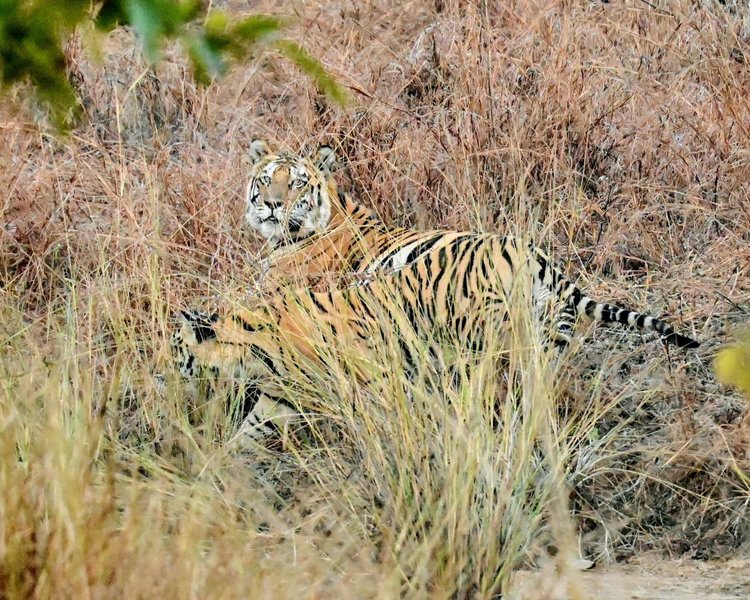Is It Worth Visiting Panna National Park For A Tiger Safari?
Are you wondering if it is worth visiting Panna National Park? Read on!
My experience at Panna was my first Indian Safari and it definitely will not be my last!
Panna National Park is located in the heart of India in the state of Madhya Pradesh. The park serves as a crucial part of India’s wildlife conservation efforts, offering an escape into nature. With the roar of tigers and the chirping of exotic birds, Panna promises an unforgettable experience!
Is it worth visiting Panna National Park?
Yes! Hands down Panna National Park is worth visiting.
If you’re seeking an authentic wildlife experience, enjoy serene natural landscapes, and appreciate the importance of conservation, then Panna should undoubtedly be on your travel list. It offers a unique opportunity to witness India’s wildlife up close.
The park’s commitment to conservation and its role in the local community add depth to your visit, making it not just a journey into the wild but a contribution to an important cause.
Are there tigers at Panna National Park?
Yes, there are tigers at Panna National Park. In fact, Panna is famous for its reintroduction of tigers to the wild. In 2009 its Tiger population dropped to zero due to poaching. But in 2010 Tigers were reintroduced to the area and they now thrive there thanks to tiger conservation efforts.
There are 60+ tigers in the park and surrounding area (as of my visit in January 2023).
Visitors to the park contribute to conservation efforts, with a portion of the fees going towards the preservation of wildlife and their habitats.
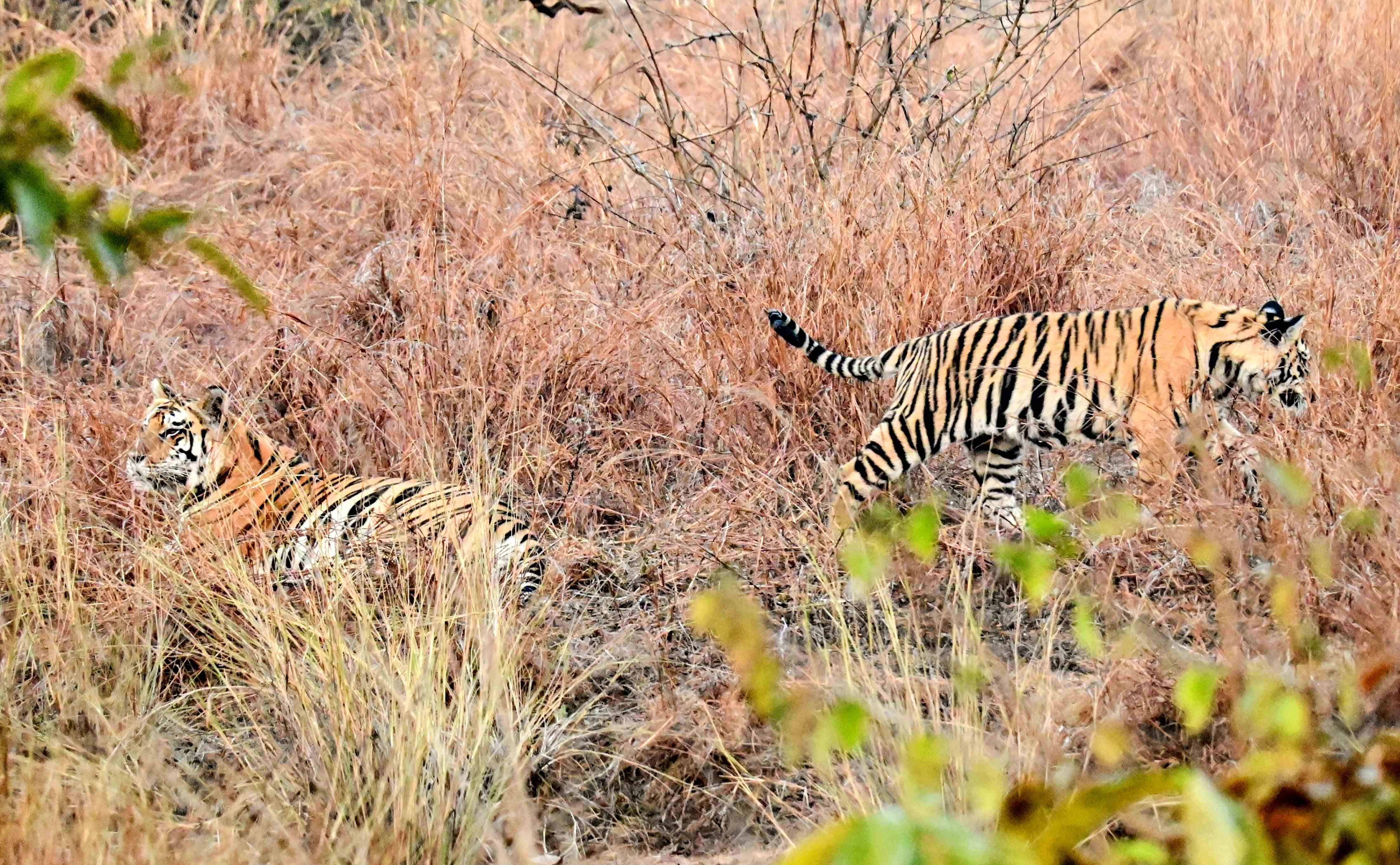
How to get to Panna National Park
Panna can be difficult to get to, with the nearest airport being in Khajuraho. While the airport is only about an hour away from the park, it averages one flight a day from Delhi.
We flew into Jabalpur (direct from Mumbai), which is about 4.5 hours south, the day before hiring a car to drive to Panna.
We heard from others during our stay that their flights from Delhi to Khajuraho were delayed and/or redirected due to the heavy smog up north in India’s winter. But we flew out of Khajuraho to Delhi and our flight was on time.
The 3 best ways to get to Panna National Park:
✈️ Fly directly into Khajuraho airport and drive 1 hour to Panna
✈️ Fly into Jabalpur airport and drive 4.5 hours to Panna
🚆Take the train to Khajuraho and drive 1 hour to Panna
How to book safaris at Panna
We booked our safaris directly through Taj Pashan Garh, which has its own naturalists that serve as your guide on the safaris. We entered through the Hinota Gate, which is less popular with tourists but that was a huge plus for us. Only about ten vehicles are allowed to enter from that gate during each safari time slot.
The morning safaris ran from 6:00am to 11:15am while the afternoon safaris are from 3:00pm to 5:45pm. Through Taj the morning safari included a nice breakfast stop with a full spread including tea, coffee, parathas, sandwiches, fruit, muffins, and more.
Be sure to book safaris ahead of time as they fill up fast. We wanted to add a safari once we were there but there was no availability.
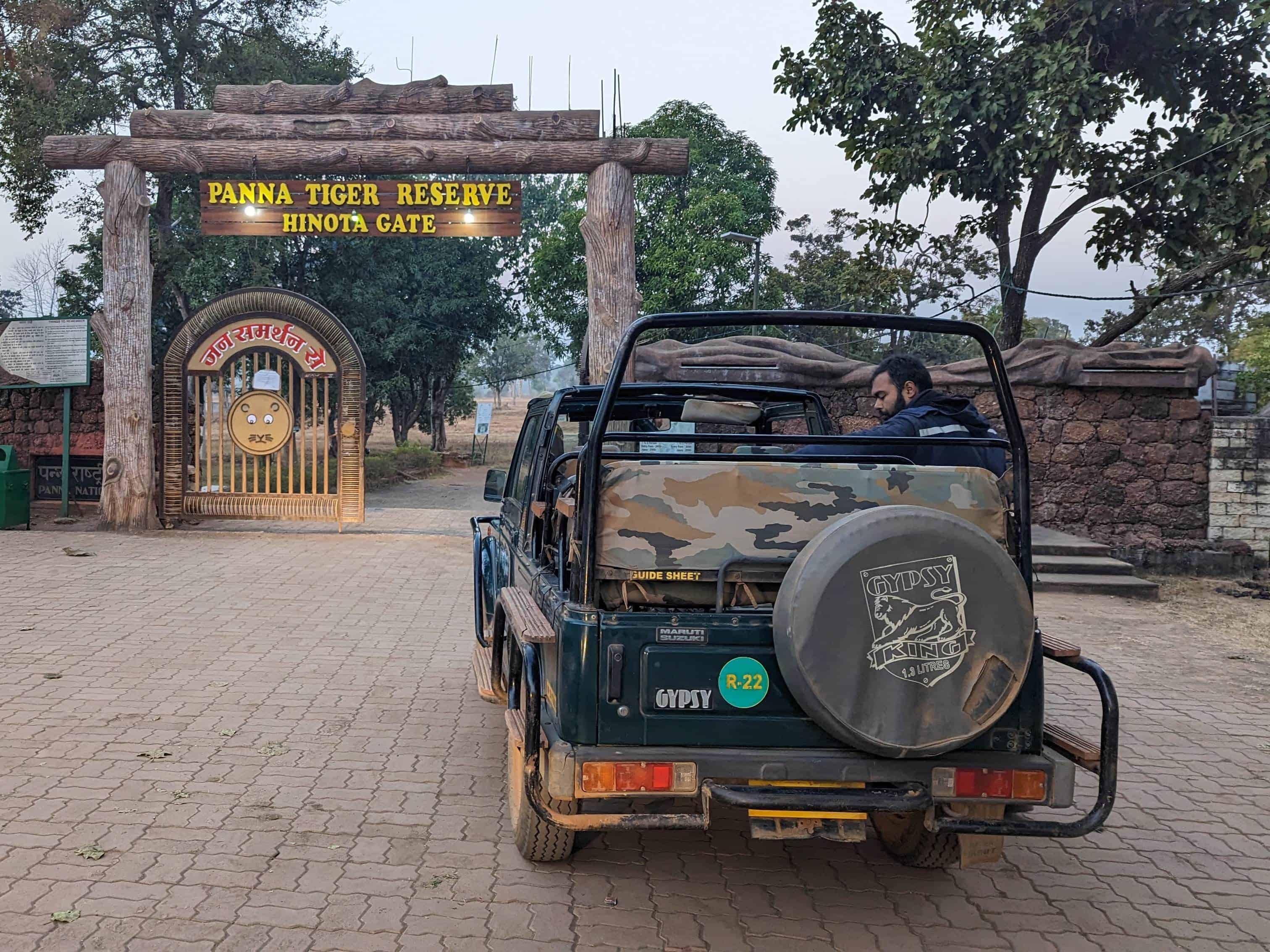
Visiting Panna National Park: FAQs
Some additional important information for planning your visit to Panna.
What is the best time of year to visit Panna National Park?
Panna National Park is closed during the monsoon season so you should plan your visit for when the park is open from mid-October through mid-June.
The winter months are a great time to visit the park when the weather is cooler and the animals are often active in the open to warm up in the sun.
What are the chances of seeing a Tiger in Panna National Park?
While Panna offers an enriching experience, it’s important to set the right expectations. Wildlife sightings, especially of tigers, can never be guaranteed. The thrill lies in the unpredictability and the chance to immerse yourself in the park’s natural beauty.
I went on three safaris in the park and was lucky enough to see tigers on one of the three outings.
What time are the safaris at Panna National Park?
Safaris are allowed in to Panna National Park two times per day. The number of vehicles allowed in is limited during each time so be sure to book your safaris in advance.
Morning Safaris: 6:30 AM – 10:30 AM
Afternoon Safaris: 2:30 PM – 5:30 PM
What happens on a safari at Panna?
The most exciting moments of the three safaris we went on at Panna were the first thirty minutes of our morning safari. We were treated to a majestic tigress and her two cubs (about four to five months old) grazing near a kill she had made a couple days earlier. It was the third day the tigers were spotted in that area. By the next morning they had finished their feast and moved on.
The next afternoon, only one minute after entering the gate on our second safari we were lucky enough to see “a ghost of the jungle” aka a leopard. They’ve earned their nickname in part due to their “blink and you miss it” appearances around the park. Although there are over 300 leopards around the park, they are spotted much less frequently than the tigers.
On our third safari we felt very close to spotting a tiger, but it managed to elude us. We spotted plenty of fresh tracks and heard lots of nearby alarm calls from both white spotted deer and sambar. The sambar alarm calls are the most reliable when tracking because it means they have actually laid eyes on a predator. Whereas a white spotted deer’s calls could mean they simply heard noises from a predator.
The pockmarks we spotted on a few different trails belonged to a tiger the naturalists and guides had nicknamed “Mr. India” due to his ability to disappear into the forest with only his footprints as proof he had been in the area. The only cat spotted on our final drive was a jungle cat. The ringed pattern of his fur on his tail made him look like a badass house cat. We followed him for quite some time as he trotted along the trail and hunted for small prey in the tall grass around.
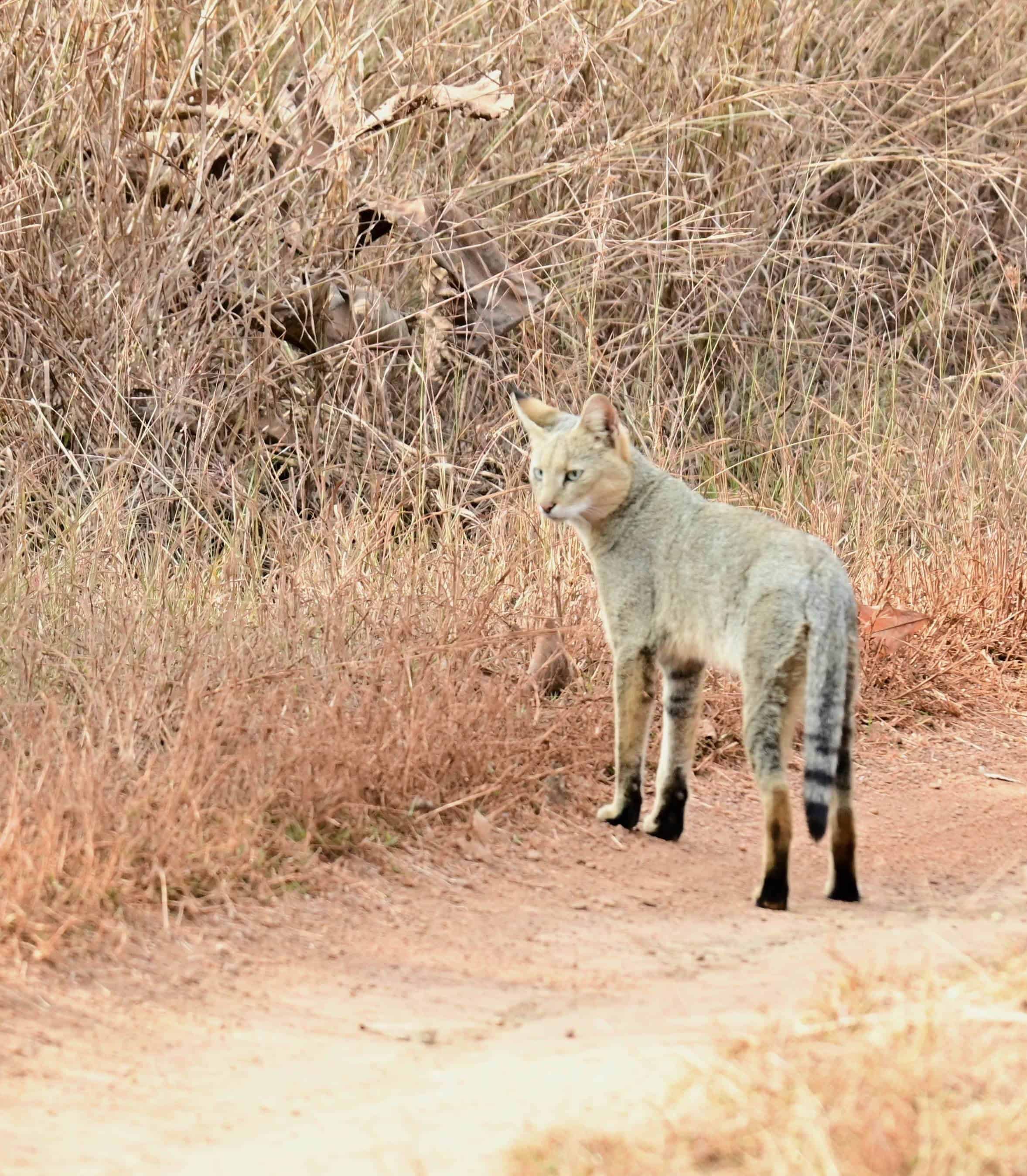
What animals are there at Panna National Park?
Besides the much sought after big cats, tigers and leopards, other honorable safari sightings include a serpentine eagle, mongooses, lots of white spotted deer, blue bucks, vultures, wild boars, and peacocks.
The park’s avian population is impressive, with over 200 species of birds, making it a paradise for birdwatchers.
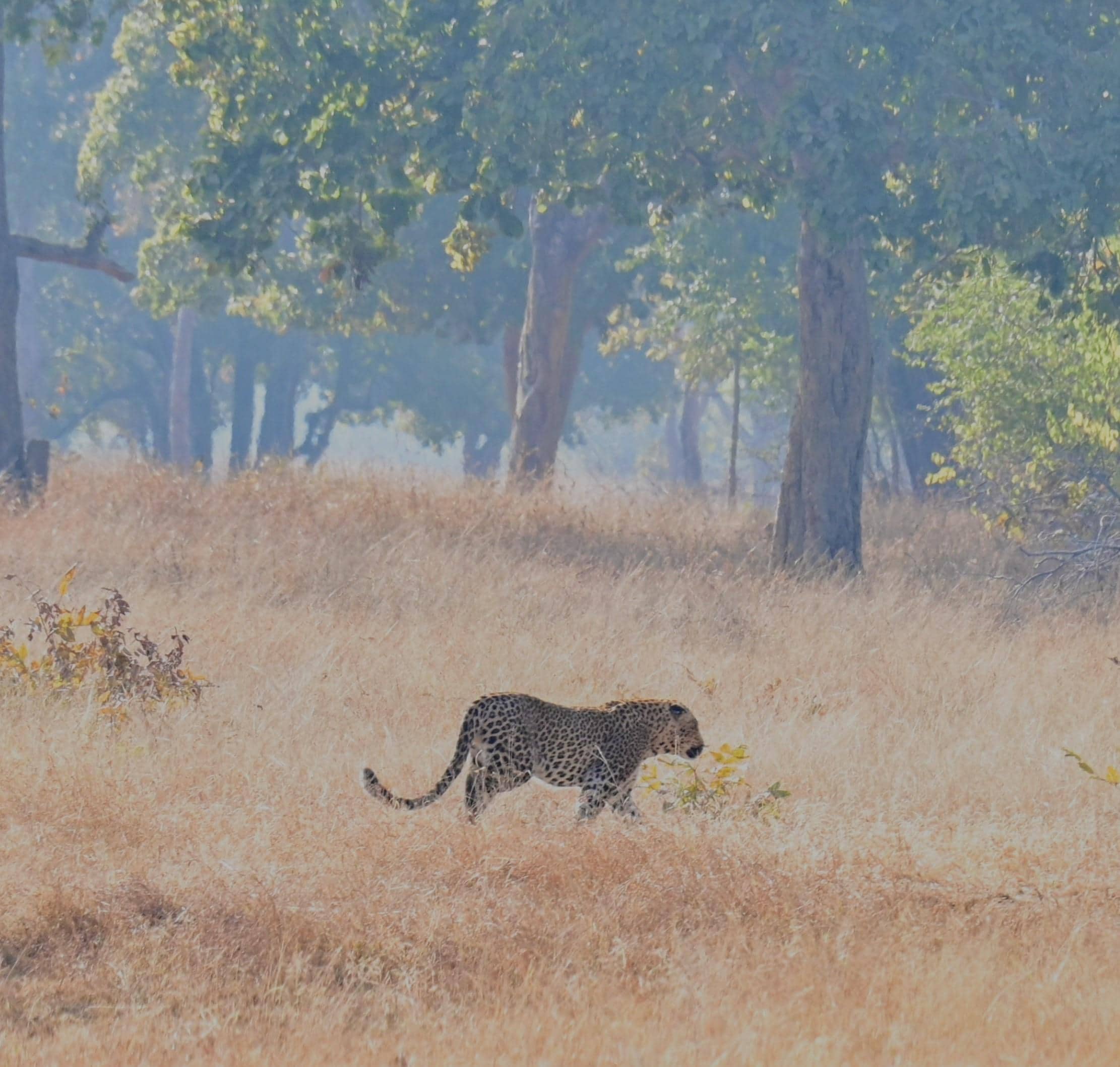
What makes an Indian safari unique?
Our naturalist explained how the Indian safari differs from African safaris. You get more of the thrill of the chase, as you listen for animal calls and watch for pock marks to track the animals. As opposed to many African safaris where the animal sightings are radioed in and you are taken directly to them.
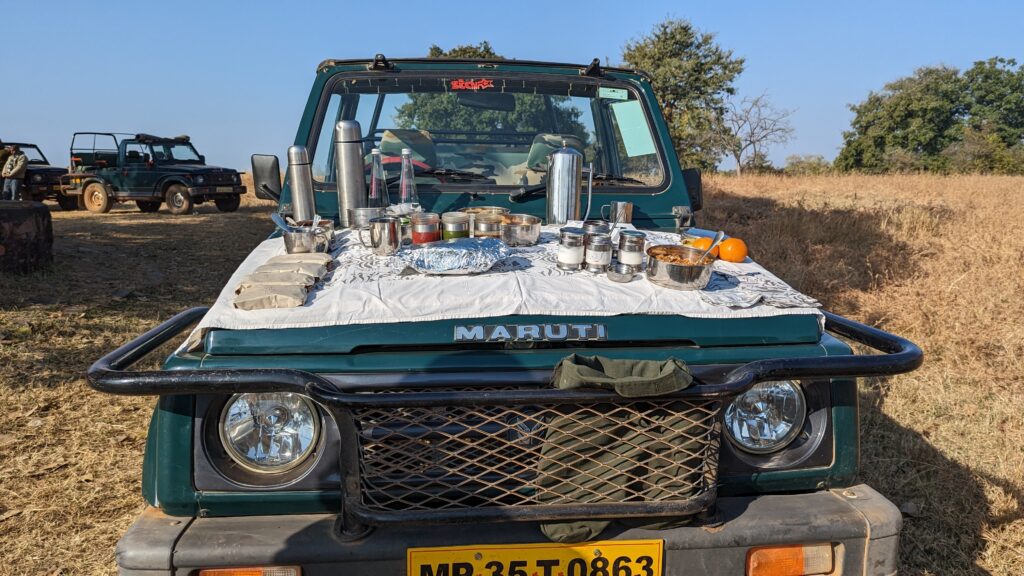
Where to stay near Panna National Park
Without a doubt, the best place to stay at Panna National Park is Taj Pashan Garh. It’s a luxury resort made up of only 12 cottages located in the buffer zone of the national park and often has tigers seen on the property. We were told they can be spotted more in the summer time when they are on the hunt for water.
The service I received at this resort was above and beyond! They set up two special dinners for us including a bonfire and rooftop candlelight dinner. When we had to be awake before sunrise for our morning safaris, they delivered coffee to our room through a butler window as a wake up call.
I can’t imagine visiting Panna without staying at the Taj Pashan Garh!
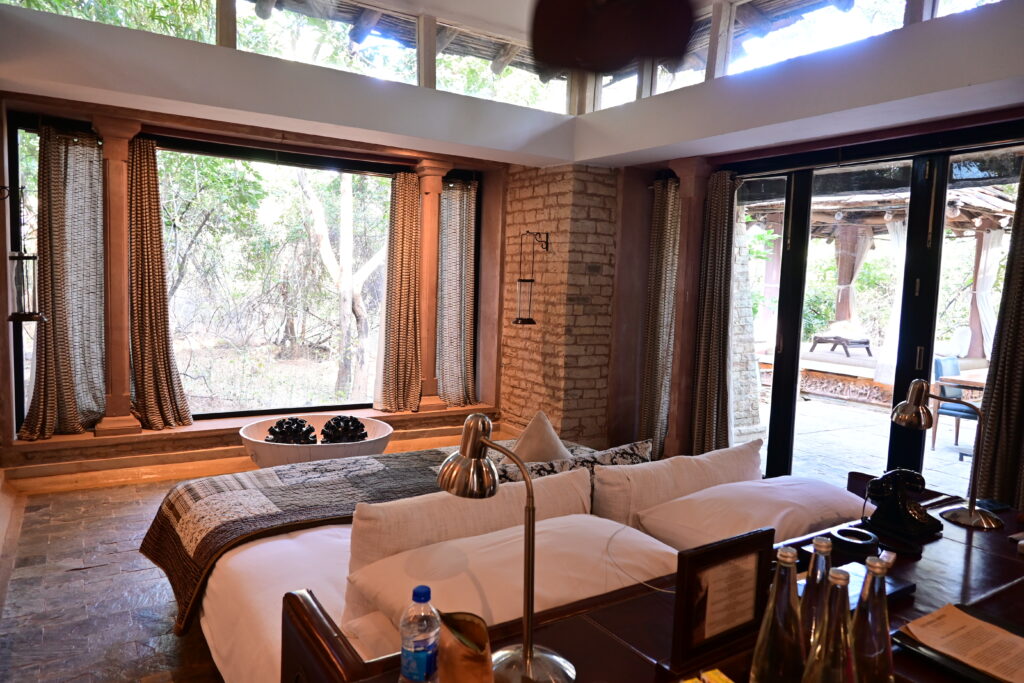
TLDR: Is it worth visiting Panna National Park?
Panna National Park is more than worth the visit—it’s a must-see for anyone passionate about nature, wildlife, and cultural exploration.
Taj Pashan Garh and Panna National Park offer an unparalleled travel experience that brings together the thrill of the wild and the luxury of a world-class retreat. As you explore the wilderness of Panna National Park and encounter the creatures that call it home, you’ll also be treated to the impeccable Taj hospitality.
On your trip to Panna National Park, you should consider visiting the nearby Khajuraho Temples.

